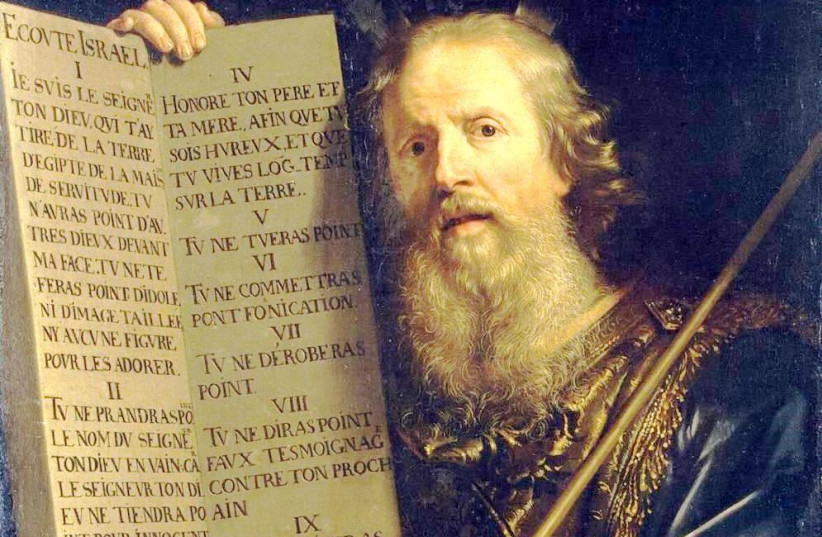This Saturday night, the Jewish nation around the world will begin celebrating Shavuot, also known as the Feast of Weeks, Zman Matan Torahteinu (The Day We Received the Torah) and Yom Habikurim (The Day of the Firstfruits). This last name is based on the commandment to bring the first of the wheat harvested in the Land of Israel during this season. The name Matan Torah marks the historic event that took place on this day – Ma’amad Har Sinai (the revelation at Mount Sinai) – in which God made a covenant between Him and the nation that left Egypt, our forefathers – the Children of Israel.
The revelation at Mount Sinai did not occur immediately after the Israelites left Egypt. They wandered in the desert for almost 50 days, and on the 50th day, they experienced the Divine revelation whose impact has been etched in the heart of the nation to this day.
What happened then that the Torah was given especially on this day?
The sages examined the verses that precede the description of the revelation and discovered that when the wandering nation reached the foot of Mount Sinai, it says, “and Israel encamped (vayichan) there opposite the mountain” using the singular, as opposed to the description that was written in the plural – “they journeyed… they arrived…they encamped…”
The sages learned from this that the social-moral state of the nation changed. If until now the nation was divided and there was tension between the various groups, at this point, the nation was, as Rashi states, “as one man with one heart.”

Receiving the Torah was contingent upon our being one nation, one man with one heart. God did not give the Torah to a specific group, and certainly not to specific individuals. The Torah was given to the entire, united nation. Therefore, every one of us is welcome to get to know it, to learn it and study it, and to draw wisdom and life values from it.
One of the most ancient and exciting customs on Shavuot is Tikkun Leil Shavuot. Many people stay up on the night of the holiday to study Torah in the synagogue. The Zohar tells us what Rabbi Shimon bar Yochai said to his friends:
“Thus, the earlier pious ones did not sleep on this night, and they studied Torah… Rabbi Shimon would say when his colleagues gathered around him this night, ‘Let us arrange the jewels of the bride, so tomorrow she will appear before the king suitably adorned and bedecked’” (Zohar 3:98).
The night study is meant to recreate the preparations for the revelation at Mount Sinai when the covenant between God and the nation was made and the Torah was given. By studying Torah, we wish to reach that lofty moment when the Torah was given, with deep connection and devotion, yearning and desire to get to know the Torah, to study it and learn from it.
Together with this, we have to remember that the main preparation for the revelation at Mount Sinai was being “as one man with one heart.” We are called upon to become unified before receiving the Torah, recognizing the Torah’s unique ability to be the flag around which the nation gathers, even if each person paints the flag in his or her own shades.
There is a famous story in the Talmud of a gentile who came to Hillel the Elder, the president of the Sanhedrin in Jerusalem in the 1st century BCE, and asked to be converted on the condition that Hillel teaches him the entire Torah while he (the prospective convert) stands on one foot.
The man was no idiot, and he knew full well that learning the entire Torah was a yearslong project of great effort. But he asked to define the fundamental principle, the nucleus, upon which Judaism is based. Hillel responded with the following statement, “What is hateful to you, do not do to your neighbor. That is the whole Torah; the rest is the explanation of this – go and study it!”
“What is hateful to you, do not do to your neighbor. That is the whole Torah; the rest is the explanation of this – go and study it!”
Hillel
Hillel met the challenge of refining Judaism’s basic principle and found that loving others is the infrastructure of all of Judaism. Of course, he emphasized that this does not encompass all of Judaism and sent the convert to learn more, but he based everything on the moral foundation of loving the other and of unity.
If we ask where Hillel learned that unity and love of others are the values that serve as the essence of Judaism, it may be that he learned it from the biblical description of the revelation at Mount Sinai. If the Torah was given only when the nation was “as one man with one heart,” that is the seed upon which to move forward to receive the entire Torah. ■
The writer is rabbi of the Western Wall and Holy Sites.
